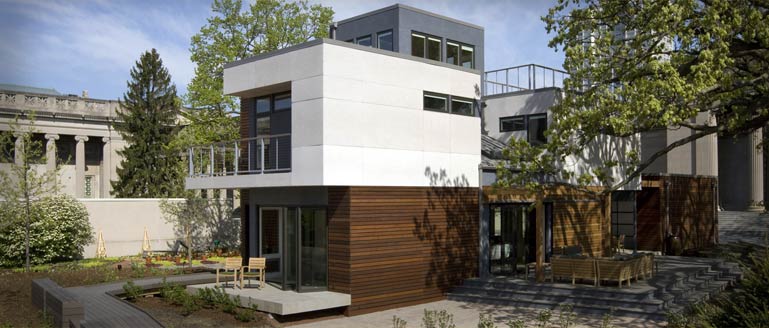
The City of Chicago has made a commitment to being the most environmentally friendly city in the nation, so it’s no surprise that Chicago’s Museum of Science and Industry would create an exhibit to showcase the future of eco-friendly architecture, building materials and residential technology. Considering the Museum’s long history of innovative exhibits, it’s also no surprise that their tribute to sustainable homebuilding is truly groundbreaking. The Museum of Science and Industry’s Smart Home: Green + Wired exhibit brought together renowned sustainable architect Michelle Kaufmann, industry-leading modular home builder All-American Homes and Wired magazine, as well as an impressive lineup of green residential technology providers, to create a one-of-kind, fully-functioning eco-home right at the Museum. Every square inch of this extraordinary home demonstrates energy efficiency in action, and is designed to educate visitors about the newest trends in eco-friendly home-building and inspire everyone to reduce their personal environmental impact. Doherty Design Group was selected to create a lighting control system for the 2,500 square-foot home. Because the structure was built in the All-American Homes factory, the system had to be installed long after construction was complete. In addition, DDG’s system needed to accommodate cutting-edge fluorescent, LED and other energy-efficient lighting–technologies so new that lighting control standards for these fixtures had not yet been developed. And though the exhibit is designed to leave a lasting impression, the house will be disassembled in the near future. To be considered truly green, the lighting control system had to be easy to remove and reinstall in another home. DDG specified a lighting control system that fit with the home’s clean lines and simple sensibility, and accounted for a wide variety of natural light sources and green lighting fixtures. Centered around the wireless Lutron HomeWorks® family of products, the DDG lighting control system was also easy to retrofit after the home’s wiring and walls were completed, and can be quickly disassembled for reuse in another home. By every standard, the Smart Home exhibit was a tremendous success, and the Museum and project participants have agreed to open the home for a second year. |
|
|||||||||||||||
|
|